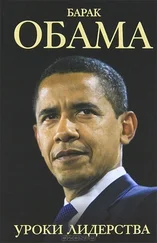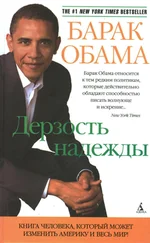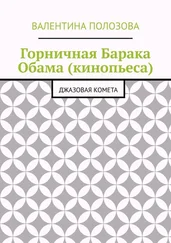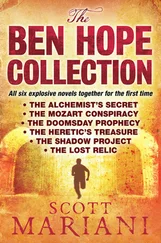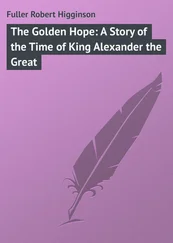Барак Обама - The Audacity of Hope
Здесь есть возможность читать онлайн «Барак Обама - The Audacity of Hope» весь текст электронной книги совершенно бесплатно (целиком полную версию без сокращений). В некоторых случаях можно слушать аудио, скачать через торрент в формате fb2 и присутствует краткое содержание. Жанр: Политика, на английском языке. Описание произведения, (предисловие) а так же отзывы посетителей доступны на портале библиотеки ЛибКат.
- Название:The Audacity of Hope
- Автор:
- Жанр:
- Год:неизвестен
- ISBN:нет данных
- Рейтинг книги:5 / 5. Голосов: 1
-
Избранное:Добавить в избранное
- Отзывы:
-
Ваша оценка:
- 100
- 1
- 2
- 3
- 4
- 5
The Audacity of Hope: краткое содержание, описание и аннотация
Предлагаем к чтению аннотацию, описание, краткое содержание или предисловие (зависит от того, что написал сам автор книги «The Audacity of Hope»). Если вы не нашли необходимую информацию о книге — напишите в комментариях, мы постараемся отыскать её.
The Audacity of Hope — читать онлайн бесплатно полную книгу (весь текст) целиком
Ниже представлен текст книги, разбитый по страницам. Система сохранения места последней прочитанной страницы, позволяет с удобством читать онлайн бесплатно книгу «The Audacity of Hope», без необходимости каждый раз заново искать на чём Вы остановились. Поставьте закладку, и сможете в любой момент перейти на страницу, на которой закончили чтение.
Интервал:
Закладка:
Is cheap oil worth the costs — in blood and treasure — of war? Will our military intervention in a particular ethnic dispute lead to a permanent political settlement or an indefinite commitment of U.S. forces? Can our dispute with a country be settled diplomatically or through a coordinated series of sanctions? If we hope to win the broader battle of ideas, then world opinion must enter into this calculus. And while it may be frustrating at times to hear anti-American posturing from European allies that enjoy the blanket of our protection, or to hear speeches in the UN General Assembly designed to obfuscate, distract, or excuse inaction, it’s just possible that beneath all the rhetoric are perspectives that can illuminate the situation and help us make better strategic decisions.
Finally, by engaging our allies, we give them joint ownership over the difficult, methodical, vital, and necessarily collaborative work of limiting the terrorists’ capacity to inflict harm. That work includes shutting down terrorist financial networks and sharing intelligence to hunt down terrorist suspects and infiltrate their cells; our continued failure to effectively coordinate intelligence gathering even among various U.S. agencies, as well as our continued lack of effective human intelligence capacity, is inexcusable. Most important, we need to join forces to keep weapons of mass destruction out of terrorist hands.
One of the best examples of such collaboration was pioneered in the nineties by Republican Senator Dick Lugar of Indiana and former Democratic Senator Sam Nunn of Georgia, two men who understood the need to nurture coalitions before crises strike, and who applied this knowledge to the critical problem of nuclear proliferation. The premise of what came to be known as the Nunn-Lugar program was simple: After the fall of the Soviet Union, the biggest threat to the United States — aside from an accidental launch — wasn’t a first strike ordered by Gorbachev or Yeltsin, but the migration of nuclear material or know-how into the hands of terrorists and rogue states, a possible result of Russia’s economic tailspin, corruption in the military, the impoverishment of Russian scientists, and security and control systems that had fallen into disrepair. Under Nunn-Lugar, America basically provided the resources to fix up those systems, and although the program caused some consternation to those accustomed to Cold War thinking, it has proven to be one of the most important investments we could have made to protect ourselves from catastrophe.
In August 2005, I traveled with Senator Lugar to see some of this handiwork. It was my first trip to Russia and Ukraine, and I couldn’t have had a better guide than Dick, a remarkably fit seventy-three-year-old with a gentle, imperturbable manner and an inscrutable smile that served him well during the often interminable meetings we held with foreign officials. Together we visited the nuclear facilities of Saratov, where Russian generals pointed with pride to the new fencing and security systems that had been recently completed; afterward, they served us a lunch of borscht, vodka, potato stew, and a deeply troubling fish Jell-O mold. In Perm, at a site where SS-24 and SS-25 tactical missiles were being dismantled, we walked through the center of eight-foot-high empty missile casings and gazed in silence at the massive, sleek, still-active missiles that were now warehoused safely but had once been aimed at the cities of Europe.
And in a quiet, residential neighborhood of Kiev, we received a tour of the Ukraine’s version of the Centers for Disease Control, a modest three-story facility that looked like a high school science lab. At one point during our tour, after seeing windows open for lack of air-conditioning and metal strips crudely bolted to door jambs to keep out mice, we were guided to a small freezer secured by nothing more than a seal of string. A middle-aged woman in a lab coat and surgical mask pulled a few test tubes from the freezer, waving them around a foot from my face and saying something in Ukrainian.
“That is anthrax,” the translator explained, pointing to the vial in the woman’s right hand. “That one,” he said, pointing to the one in the left hand, “is the plague.”
I looked behind me and noticed Lugar standing toward the back of the room.
“You don’t want a closer look, Dick?” I asked, taking a few steps back myself.
“Been there, done that,” he said with a smile.
There were moments during our travels when we were reminded of the old Cold War days. At the airport in Perm, for example, a border officer in his early twenties detained us for three hours because we wouldn’t let him search our plane, leading our staffs to fire off telephone calls to the U.S. embassy and Russia’s foreign affairs ministry in Moscow. And yet most of what we heard and saw — the Calvin Klein store and Maserati showroom in Red Square Mall; the motorcade of SUVs that pulled up in front of a restaurant, driven by burly men with ill-fitting suits who once might have rushed to open the door for Kremlin officials but were now on the security detail of one of Russia’s billionaire oligarchs; the throngs of sullen teenagers in T-shirts and low-riding jeans, sharing cigarettes and the music on their iPods as they wandered Kiev’s graceful boulevards — underscored the seemingly irreversible process of economic, if not political, integration between East and West.
That was part of the reason, I sensed, why Lugar and I were greeted so warmly at these various military installations. Our presence not only promised money for security systems and fencing and monitors and the like; it also indicated to the men and women who worked in these facilities that they still in fact mattered. They had made careers, had been honored, for perfecting the tools of war. Now they found themselves presiding over remnants of the past, their institutions barely relevant to nations whose people had shifted their main attention to turning a quick buck.
Certainly that’s how it felt in Donetsk, an industrial town in the southeastern portion of Ukraine where we stopped to visit an installation for the destruction of conventional weapons. The facility was nestled in the country, accessed by a series of narrow roads occasionally crowded with goats. The director of the facility, a rotund, cheerful man who reminded me of a Chicago ward superintendent, led us through a series of dark warehouse-like structures in various states of disrepair, where rows of workers nimbly dismantled an assortment of land mines and tank ordnance, and empty shell casings were piled loosely into mounds that rose to my shoulders. They needed U.S. help, the director explained, because Ukraine lacked the money to deal with all the weapons left over from the Cold War and Afghanistan — at the pace they were going, securing and disabling these weapons might take sixty years. In the meantime weapons would remain scattered across the country, often in shacks without padlocks, exposed to the elements, not just ammunition but high-grade explosives and shoulder-to-air missiles — tools of destruction that might find their way into the hands of warlords in Somalia, Tamil fighters in Sri Lanka, insurgents in Iraq.
As he spoke, our group entered another building, where women wearing surgical masks stood at a table removing hexogen — a military-grade explosive — from various munitions and placing it into bags. In another room, I happened upon a pair of men in their undershirts, smoking next to a wheezing old boiler, flicking their ashes into an open gutter filled with orange-tinted water. One of our team called me over and showed me a yellowing poster taped to the wall. It was a relic of the Afghan war, we were told: instructions on how to hide explosives in toys, to be left in villages and carried home by unsuspecting children.
Читать дальшеИнтервал:
Закладка:
Похожие книги на «The Audacity of Hope»
Представляем Вашему вниманию похожие книги на «The Audacity of Hope» списком для выбора. Мы отобрали схожую по названию и смыслу литературу в надежде предоставить читателям больше вариантов отыскать новые, интересные, ещё непрочитанные произведения.
Обсуждение, отзывы о книге «The Audacity of Hope» и просто собственные мнения читателей. Оставьте ваши комментарии, напишите, что Вы думаете о произведении, его смысле или главных героях. Укажите что конкретно понравилось, а что нет, и почему Вы так считаете.

![Барак Обама - Дерзость надежды. Мысли об возрождении американской мечты [The Audacity of Hope]](/books/26630/barak-obama-derzost-nadezhdy-mysli-ob-vozrozhdenii-thumb.webp)

